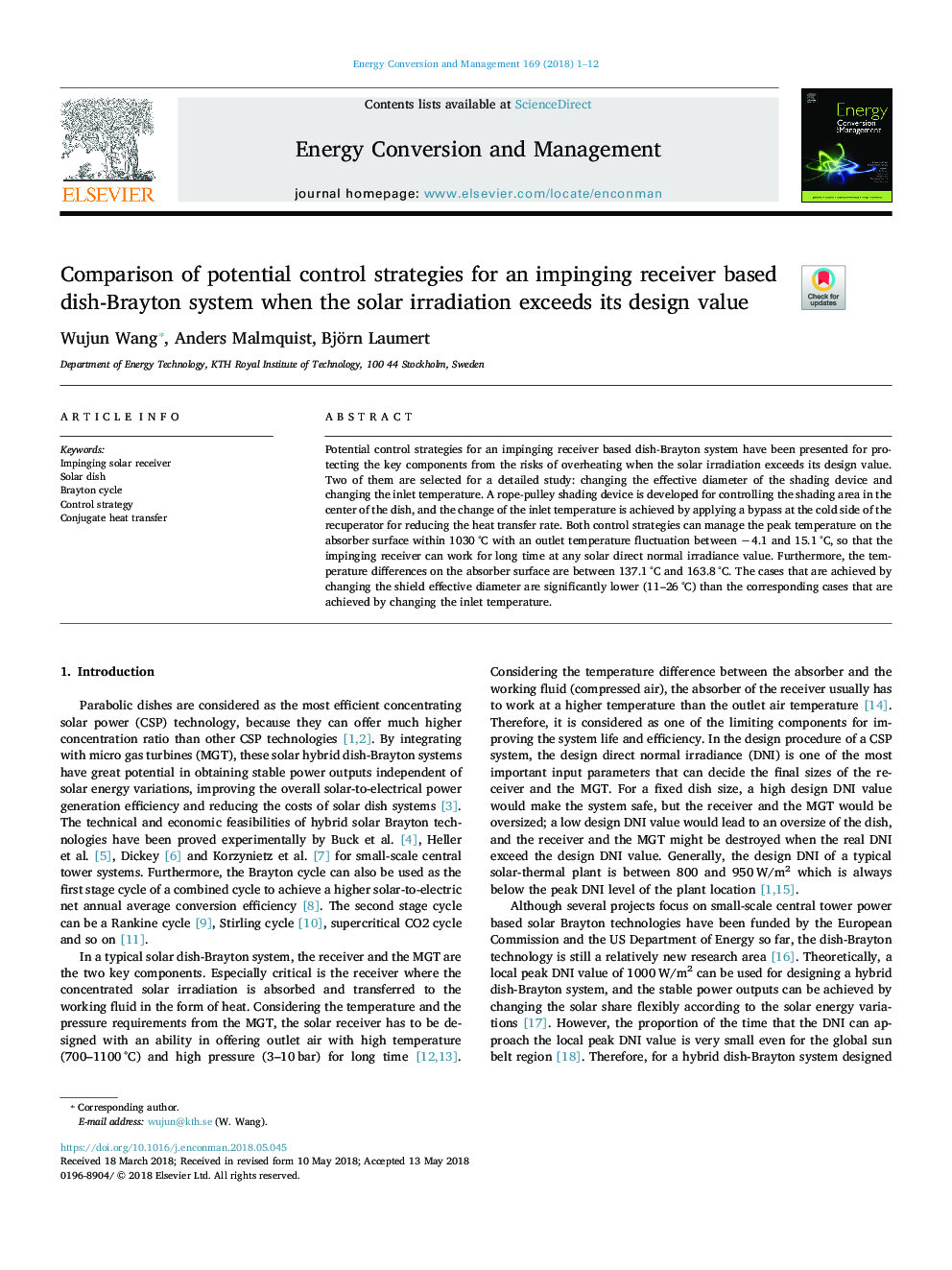| Article ID | Journal | Published Year | Pages | File Type |
|---|---|---|---|---|
| 7158144 | Energy Conversion and Management | 2018 | 12 Pages |
Abstract
Potential control strategies for an impinging receiver based dish-Brayton system have been presented for protecting the key components from the risks of overheating when the solar irradiation exceeds its design value. Two of them are selected for a detailed study: changing the effective diameter of the shading device and changing the inlet temperature. A rope-pulley shading device is developed for controlling the shading area in the center of the dish, and the change of the inlet temperature is achieved by applying a bypass at the cold side of the recuperator for reducing the heat transfer rate. Both control strategies can manage the peak temperature on the absorber surface within 1030â¯Â°C with an outlet temperature fluctuation between â4.1 and 15.1â¯Â°C, so that the impinging receiver can work for long time at any solar direct normal irradiance value. Furthermore, the temperature differences on the absorber surface are between 137.1â¯Â°C and 163.8â¯Â°C. The cases that are achieved by changing the shield effective diameter are significantly lower (11-26â¯Â°C) than the corresponding cases that are achieved by changing the inlet temperature.
Related Topics
Physical Sciences and Engineering
Energy
Energy (General)
Authors
Wujun Wang, Anders Malmquist, Björn Laumert,
